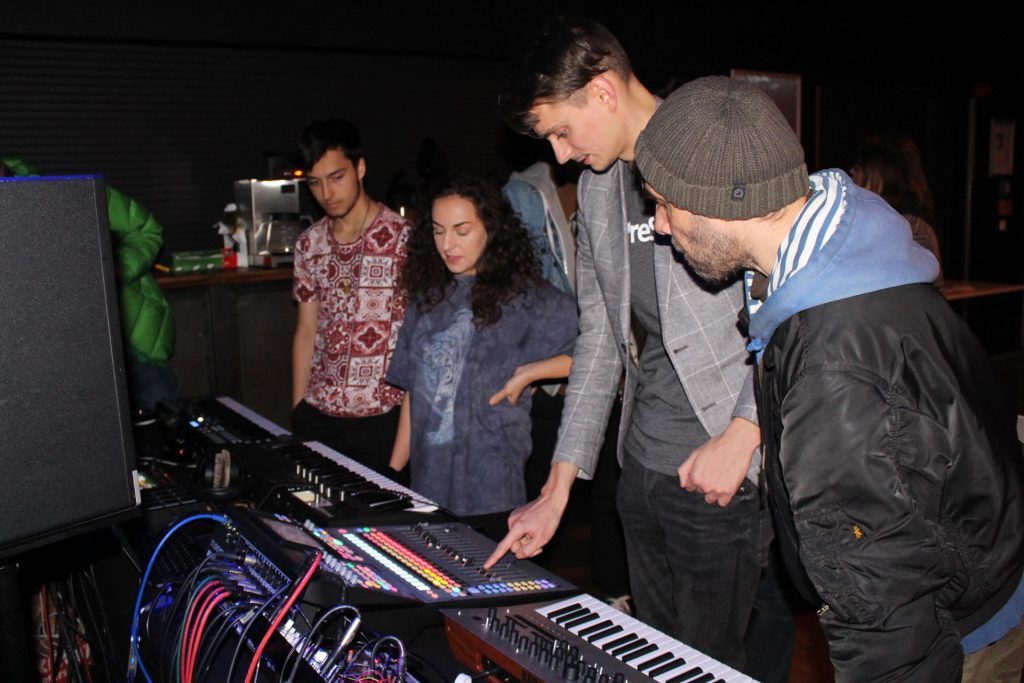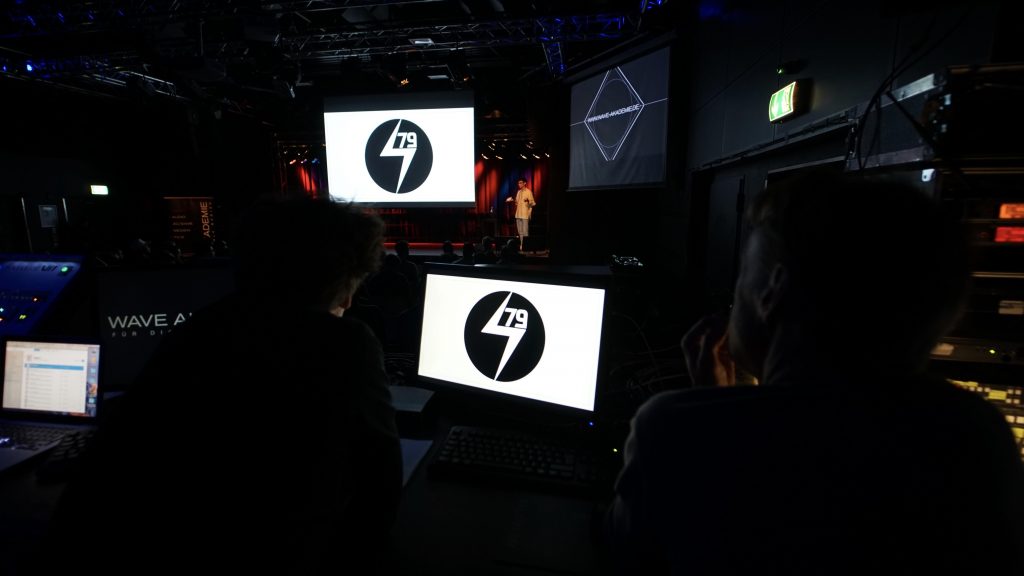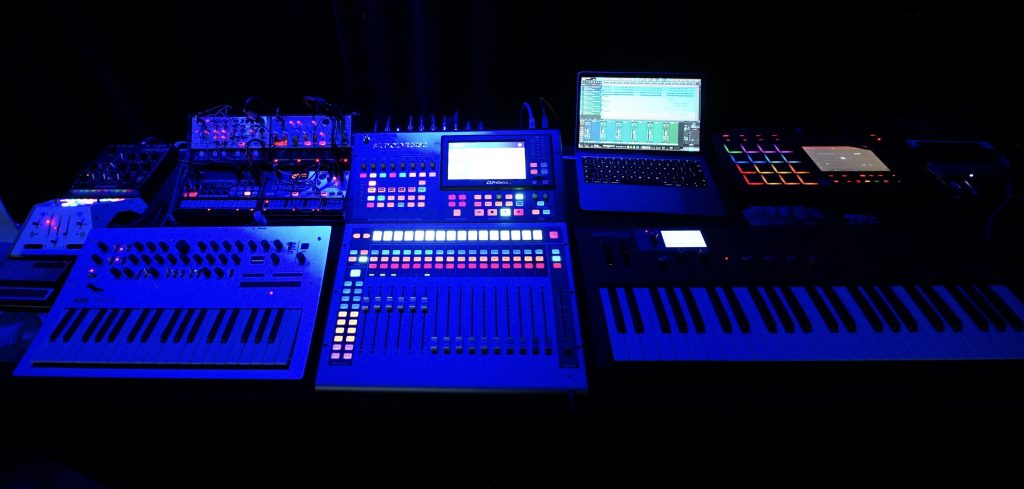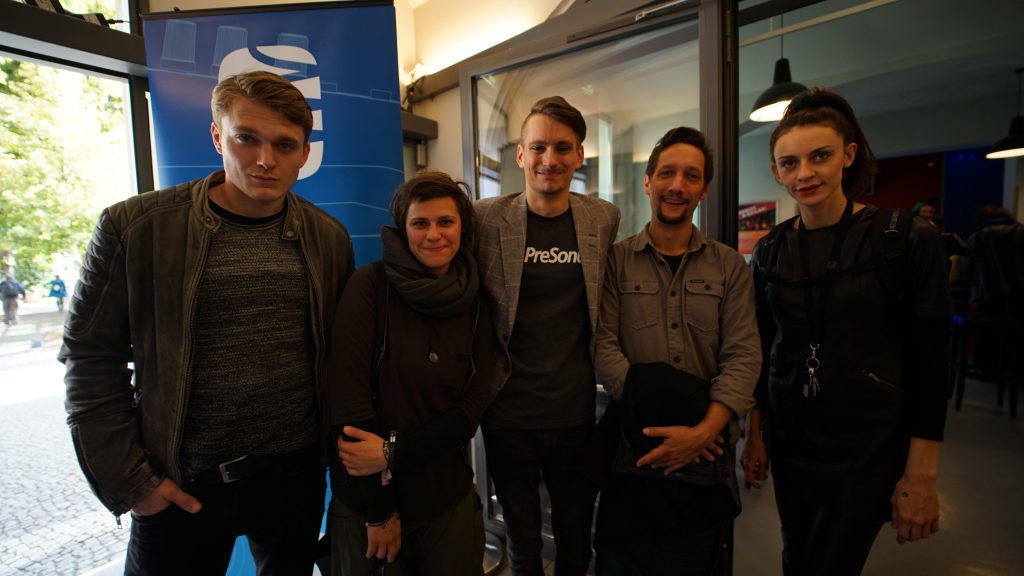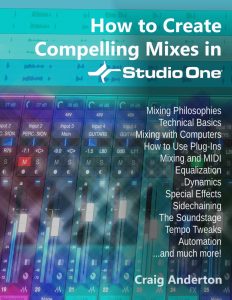Author Archives: Ryan Roullard
Using StudioLive Series III in the Studio
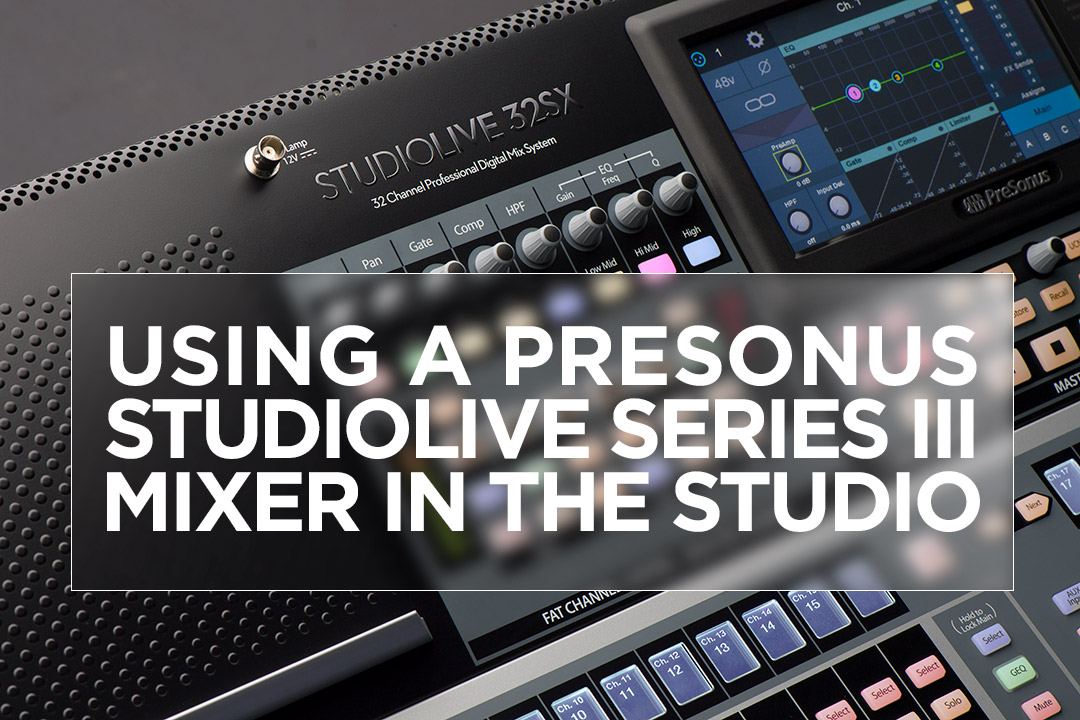
Let’s take a closer look at the “Studio” in “StudioLive,” with special guest host Matt Osgood! In this six-video series, Matt covers everything from basic setup to recording with effects and remote control. Later in the series we get a look at StudioLive DAW Mode and automation writing in Studio One.
This is good stuff.
Welcome Joe Gilder to the PreSonus Fam!
Please join us in welcoming the esteemed Joe Gilder to the PreSonus family! He has a new Studio One playlist full of tips started… with more episodes to come! Check it out below.
Studio One 4.6—what’s new
Studio One 4.6 is here! To get it, launch Studio One and click “check for updates” from the “help” drop-down menu.
What’s new in 4.6
We’ve responded to the typical Studio One user requests in typical PreSonus fashion: by giving you what you’re hungry for with a side dish of stuff you didn’t even know you wanted. The new and dramatically improved Ampire leads the 4.6 charge, followed by substantial updates to Studio One’s Browser and major improvements to the Pattern Editor. We’ve also completely re-invented Exchange! (Remember Exchange? If you don’t, we aren’t mad.) And of course, there’s a smattering of uncategorizable improvements that we think you’ll like.
Oh, and if you’ve got Studio One 4, this stuff is all free. Read on.
The Ampire Strikes Back

Studio One’s guitar amp simulator, Ampire, has undergone more than a re-design—it’s been thoroughly re-engineered. We scoured auction sites and shadowy pawnshops to collect five of the most sought-after amps—responsible for a million hit songs—and the boys in Hamburg employed our State Space Modeling technology to emulate their circuit behavior down to the last freakin’ capacitor. That’s the same tech that led to the creation of our incredibly true-to-analog Fat Channel plug-ins, BTW. Oh, and we also modeled five additional classic stompboxes, and created five new cabinet impulse responses for a total of sixteen classic cabinets.
Furthermore, Ampire’s Pedalboard can be run as a standalone effect plug-in for folks who don’t need amp and cabinet simulation. Synth users should find experimenting with Pedalboard to be quite rewarding.
Studio One has always rocked… but it’s never quite rocked this hard.
Window shopping
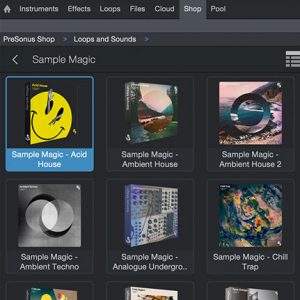
Studio One’s Browser has received a major facelift. Most significantly, shop.presonus.com now has its own tab within the browser, so you don’t even need to leave Studio One to get new sounds and plug-ins when inspiration strikes. Navigating the Browser is also now significantly faster thanks to the new navigation bar below the tabs area. You also get a beautiful new Gallery view for exploring content in a more visible way—which works for the shop, your Instruments and Effects, SoundCloud, and Exchange.
Yeah, Exchange. Remember Exchange? Good, because here comes…
Exchange 2.0!
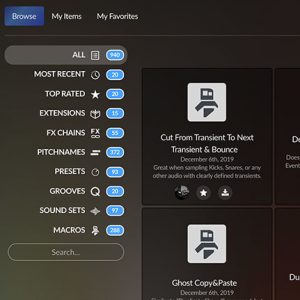
The new Exchange is where Studio One users can browse, download, review, and preview shared Studio One content from our unparalleled user community. In addition, you’ll be able to upload and rate content from other users. Furthermore, you get a public landing page where your content contributions are posted for all to see. Join the community and share liberally—everybody wins.
Pattern and Arranger updates
We introduced the Pattern Editor in Studio One 4, and we’ve already received a lot of feedback on how to make them better. You can now convert Instrument Parts to Patterns; both Melodic and Drum Patterns now allow for varied individual note lengths of more than one step. Great for basslines. Furthermore, each step in a Pattern can now have an individual delay value, which may be applied to all steps of an instrument at the same time.

Patterns now have their own Preset format, which includes Variations, which can be loaded and saved independently of the current instrument. And we’ve improved real-time recording to Patterns. (Try it, ATOM users. Seriously.)
Arranger tracks have received improved support for enclosed tempo and time signature changes, even when using the clipboard.
The kitchen sink
Podcasters and voice-over producers will appreciate the new Podcast Production template we’ve added to Studio One—but we didn’t stop there. We also added a new Macro Toolbar page featuring Macros and commands tailored to the specific needs of Podcasters and audiobook producers.
We also added some convenient new keyboard shortcuts, updated the Japanese, German, Spanish, and French manuals, and improved tempo-matching for loops, new gallery views for browsing Fat Channel EQs and compressors, realtime time-stretching support for Presence XT Editor… Click here for the release notes.

How to get multiple outputs from Kontakt in PreSonus Studio One
In this video, Gregor shows you how to set up multiple outputs in a single Native Instruments Kontakt instance. Fortunately, this is extremely easy to do in Studio One.
Studio One Tutorials!
These PreSonus Studio One Tutorials starring Gregor Beyerle will help you learn how to make beats on Studio One – and more! You’ll find everything you need to know to get started producing in Studio One in this breakthrough series—from set-up and Studio One basics to more advanced topics like the Project page.
Enjoy!
Click here to view the full playlist on YouTube.
Nigel Trego of DMT Productions: Commited to The StudioLive Series III Ecosystem
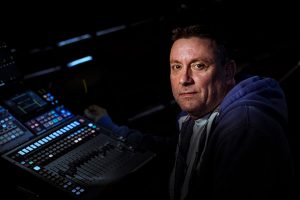
Nigel of DMT Productions
[This just in from Nigel of DMT Productions!]
Hi everyone, my name is Nigel Trego, I am the Technical Director at DMT Productions, a UK-based events production company. DMT specialises in producing live events for theatres, arenas and large festivals—from sound, lighting and projection to filming, photography and FX. DMT has been operating for ten years and has a team of 20-plus specialists including sound engineers, lighting engineers, dancers, performers, AV techs, drone, and Steadicam operators, photographers, and pyrotechnicians. DMT Productions have chosen the PreSonus Studiolive Series III Ecosystem as our touring mix package.
DMT currently has:
- two StudioLive 16s
- two StudioLive 32Rs
- two SW5E AVB switches
- two EarMix 16Ms.
DMT Production engineers have worked with the likes of Bob Dylan, Blood, Sweat and Tears, James, Texas, The Alarm, Westlife, Grace Jones, and Snow Patrol—to name a few.
We are at present engaged with several projects based in theatres, arenas and large festivals predominantly in the EU. As I write this, members of our team are working on a project filming with US-based Nitro Circus in Wales, helping to promote their World Games event across the UK.

Our current featured artist is Donna Marie, a multi-award-winning artist in her own right and the National Tribute and Music Award official #1 Lady Gaga Tribute and Impersonator for the last seven years. We are currently working for Donna to produce her UK tour of A Star is Born This Way, a tribute to the Oscar-winning film A Star is Born, in act one followed by a second act of full-on Gaga hits. The show features live and pre-recorded video, a live band, dancers, and pyrotechnics, and will be featured in a number of UK theatres—and even some arenas where Lady Gaga herself has performed!
DMT uses the PreSonus StudioLive Ecosystem exclusively. We use the PreSonus Studiolive 32R as a stage box and the StudioLive 16 at front of house. The logical layering and compact size of the StudioLive 16 make it perfect for all venue FOH sizes (some venues have limited FOH space, especially festivals) and it is easily transportable in the crew bus. We chose the PreSonus StudioLive Ecosystem for many reasons; previous experience with the StudioLive AI series and the legacy StudioLive products not only gave us the confidence in reliability and sound quality but also confidence in the ease-of-use. The layout is logical, and the Fat Channel allows for fast and clear access to parameters that are essential to a live performance. Naturally, we evaluated the competition with products such as Allen and Heath SQ-series and of course the Behringer X32 range. When compared via price vs. features/performance/
The feature sets of the Studiolive Series 3 Ecosystem are in abundance and too many to mention in this blog. However, we have some favorites! AVB is a clear winner. Great performance and flexibility allowing us to route any signal to whatever we want without having to buy expensive (licensed) AV networking expansion cards. We were using Focusrite Saffire Pro 40s as audio I/O for our sequenced stems—one of the only I/O devices that can handle 10 individual outputs (we run some of our stems in stereo). Now we can hook up a USB cable from our show control Mac straight to the StudioLive rack or console mixers and have as many USB audio channels for stems as we need; we can then route USB across the AVB network with practically zero latency. Most consoles have complicated menus for digital patching and for configuring matrices. We find the PreSonus very intuitive and easy-to-use at the console level—but even easier via UC Surface on a tablet.
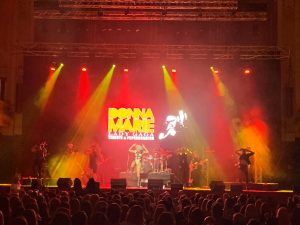 QMix-UC is also a fantastic feature. Our bands play with a click so that their performance is in sync with pre-recorded video and pre-recorded stems; thus monitor mix set-up is critical. Using an in-house desk can take up to an hour to get the perfect IEM mix for all band members, and even then that might need to change during the performance. The ability for the band to adjust their monitor mixes via the PreSonus QMix-UC app is now something that we cannot live without. Event setup time and sound check duration are dramatically reduced allowing us to focus on other areas of the production. Additionally, we save on the cost of a monitor desk and engineer. The project and scene management is second to none. Project, scenes and even the Fat Channel library can be exported/imported to/from a tablet or PC over USB or Wi-Fi.
QMix-UC is also a fantastic feature. Our bands play with a click so that their performance is in sync with pre-recorded video and pre-recorded stems; thus monitor mix set-up is critical. Using an in-house desk can take up to an hour to get the perfect IEM mix for all band members, and even then that might need to change during the performance. The ability for the band to adjust their monitor mixes via the PreSonus QMix-UC app is now something that we cannot live without. Event setup time and sound check duration are dramatically reduced allowing us to focus on other areas of the production. Additionally, we save on the cost of a monitor desk and engineer. The project and scene management is second to none. Project, scenes and even the Fat Channel library can be exported/imported to/from a tablet or PC over USB or Wi-Fi.
Our sound engineers love the PreSonus workflow and use the Fat Channel Collection Vol. 1 plug-in suite extensively. We are, however, excited about future PreSonus integration with Waves using the Waves AVB Soundgrid Bridge announced earlier this year.
The ability for us to record 34 channels of 48K multi-track at live events to SD Card (and Mac/PC) is also a fantastic feature. This allows us to take the recording back to the studio and load it straight into Studio One to mix for video production that we then use for further event promotion. We used this feature extensively during a multi-tribute festival this year where our camera operators filmed the entire three-day event. Our sound engineer took the FOH multi-track recordings back to the studio to mix. We were able to create professional video packages that we then provided to the bands that were performing, which they in turn now use as their promotional material for their socials and web.
The majority of the time, our engineers seldom use the console mixer, tablet at FOH is the way forward for them. Other great PreSonus features include the ability to share scenes between the different mixers, no matter the form factor, this is great to have a backup mix ready to go in case of an HW failure. Virtual sound check is a great tool and the ability to use two mixers in tandem is superb. Let me elaborate on that. We have the 32R set as “standalone” at drum riser position with all stage mics and instruments feeding it and the 32R is, in turn, feeding the IEMs, stage wedges and the main PA. Our show control MacBook is hooked up to the 32R via USB and digitally patched running 10 channels of USB audio. All of the 32R channels (including USB) are sent over AVB to the FOH console and the FOH console mixes (Matrix and Aux) sent back to the 32R over AVB. The flexibility of digital patching in conjunction with AVB is incredibly powerful. This allows us to benefit from the USB channels on the 32R at riser position while retaining full mix control at FOH.
One of our productions was to headline a festival this summer on a clifftop in beautiful West Wales, we had an audience of around 5000 at this particular event. We had decided to take our 32R (running on a Relio UPS) and feed the event PA (via their mixer) from the Left and Right channels of the 32R to allow us to soundcheck quickly. The event who supplied PA had a mixing desk they used for the other bands performing that evening of which we only used the two channels (Left/Right). Just before our performance began the heavens opened! Once the rain had stopped we managed to wipe the stage dry, tip the water out of the keyboard player’s keyboard and start the gig! After a spectacular video-based intro, three bars in on the first song, the power went out, no sound, no lights, no video.
The band continued to play, they were on IEMs from the 32R. Fortunately, the stage wedges were also working, they were on a different power feed to the main PA, so we turned them to face the crowd. It turns out that water had worked it’s way into the mains Distro taking out one of the electrical phases. It took the event organisers 13 minutes to fix the issue only to find their networked stage box had blown, so still no sound! We plugged the PreSonus 32R directly into the event’s amps and away we went! The show must go on. The reason for telling this story is because when we plugged the PreSonus directly into the amps, the difference in the sound quality was incredible, so much so that a number of people came over to FOH to comment on how good the sound was and to ask why it wasn’t as good for the other bands that were on during the event (not using our PreSonus). The event organisers were over the moon that the event continued during the power outage and commended DMT for keeping the audience entertained and stopping them from leaving the event.
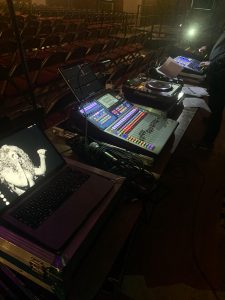
One of the most attractive things that PreSonus has to offer is that the end-user has a voice. Development of their hardware and software is continuous, user feature requests are taken seriously and the majority of them appear in the next software builds. The support infrastructure is excellent. We have called PreSonus UK on many occasions, the staff are very knowledgeable, friendly, and take a vested interest in helping to resolve even the most complex of problems, efficiently and with haste. On top of that, they are really nice guys that obviously love what they do. Interaction on social media by the PreSonus team is also a major plus point. To be able to reach out to people like Rick Naqvi, Jonny Doyle and Seth Martin on the StudioLive FaceBook Group is a great value-added commodity that is seldom seen with other companies.
For us at DMT Productions, PreSonus is a brand that we trust and we love using the products.
To find out more about DMT Productions, please feel free to visit our websites:-
OS X 10.15 Catalina Updates
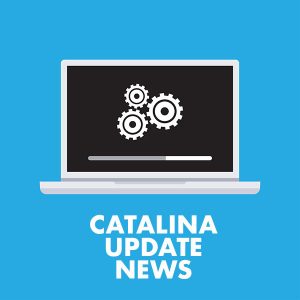
Version Information:
- Universal Control (Mac/PC) – v3.1.1.54569
- UC Surface (iOS/Android) – v3.1.0.53214
- Capture (Mac/PC) – v3.0.2.54569
- Worx Control (Mac/PC) – v1.4.0.54335
- QMix-UC (iOS/Android) – v3.0.0.5152
- StudioLive 1602 USB – XMOS v0.05
OS X 10.11.6 (El Capitan) or later
Windows 7 (x64) Service Pack 1 + Platform Update, Windows 8.1 (x64), Windows 10 (x64)
- Izotope Neutron Elements and Klanghelm SDRR2Tube will not install under 10.15.
- Arturia Analog Lite and StudioLinked Trophies will at first not install—you must CTRL+Click (or right click) and select “Open” to install them.
- Check your third-party plug-in developers’ websites for updates, as many of them may not install or run correctly under 10.15, and will need updates themselves to work correctly.
- Some of the Studio Magic Plug-ins will not run under 10.15.
WAVE AKADEMIE was a blast!
On October 11, our own Software Specialist Gregor Beyerle attended WAVE AKADEMIE Berlin’s Dissertation Presentation of Audio Engineering and 3-D/Game Design to demonstrate the StudioLive 32SC mixer’s DAW mode in conjunction with Studio One. The StudioLive 32SC is the new centerpiece of WAVE AKADEMIE’s “Soundlab,” where a large variety of both hardware and software instruments are accessible to the students.
Students and lecturers alike were amazed by the hybrid workflow of the StudioLive 32SC, which excels at integrating tons of outboard gear (like drum machines and synths) with software instruments, especially when used with Studio One. The ability to assign any channel to send or receive via analog, USB, or network gives WAVE AKADEMIE the flexibility they need in their Soundlab.
The ability to multitrack record jam sessions onto an SD card was also received with great enthusiasm, as it enables the students to record songs directly into the mixer before getting them into Studio One for post production.
Check out photos and video from the event below, and visit Wave-akademie.de for more information on upcoming events!
How to Create Compelling Mixes in Studio One—New from Craig Anderton
Available NOW at shop.presonus.com from Craig Anderton… How to Create Compelling Mixes in Studio One! This is Craig’s third book on Studio One, and it weighs in at a whopping 258 pages!
Click here to read more and shop!
Mixing is where you create an experience that transports the listener into your musical world. And now, renowned music technology expert Craig Anderton brings his years of production and mixing expertise to an easy-to-understand, comprehensive guide about all aspects of mixing. Chapters include Mixing Philosophies, Technical Basics, Mixing with Computers, How to Use Plug-Ins, Mixing and MIDI, Prepare for the Mix, Adjust Equalization, Dynamics Processing, Sidechaining, Add Other Effects, Create a Soundstage, Mix Automation, Final Timing Tweaks, and Review and Export.
Profusely illustrated, and loaded with constructive, practical, meaningful advice that will improve your mixes dramatically, this 258-page eBook sets the standard for discovering how to make compelling mixes in Studio One.
- 258 pages, 67,500 words, over 180 four-color illustrations
- Downloadable PDF, with links from the contents to book topics
- “Key Takeaways” section for each chapter summarizes chapter highlights
- “Tech Talk” sidebars do deep dives into selected topics
- Covers all aspects of mixing with Studio One
Chapter 1: Mixing Philosophies
Chapter 2: Technical Basics
Chapter 3: Mixing with Computers
Chapter 4: How to Use Plug-Ins
Chapter 5: Mixing and MIDI
Chapter 6: Prepare for the Mix
Chapter 7: Adjust Equalization
Chapter 8: Dynamics Processing
Chapter 9: Sidechaining
Chapter 10: Add Other Effects
Chapter 11: Create a Soundstage
Chapter 12: Mix Automation
Chapter 13: Final Timing Tweaks
Chapter 14: Review and Export
Appendix A: Mixing with Noise
Appendix B: Calibrating Levels
FaderPort 16 went to Rock in Rio with Helloween!
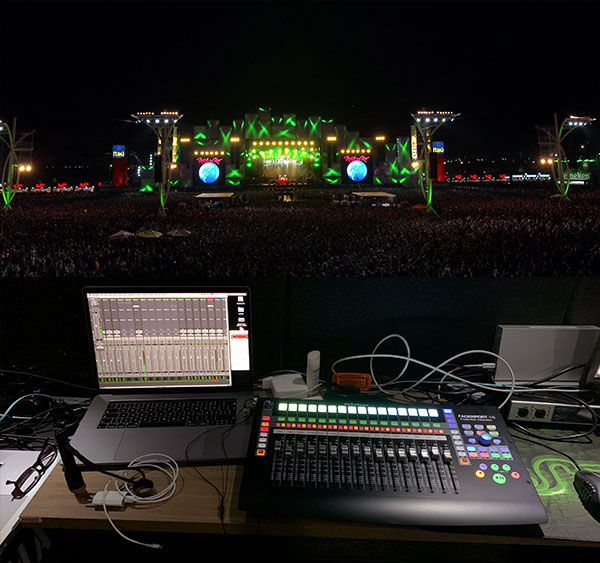
[This just in from Charlie Bauerfeind, producer for genre-defining power metal pioneers, Helloween! In his search for the perfect DAW Controller for his ultra-compact-but-complex, MacBook Pro-based, live-broadcast setup for Helloween’s Rock in Rio Show on October 4th, he turned to Presonus’s Faderport 16.]
I was blown away by the ease of use in the FaderPort 16’s setup, and the incredible versatility in this most compact DAW controller. It was truly a plug-and-play experience, and made my job in Rio go perfectly smooth… My Pro Tools-based setup is comprised of several session-based pre-programmed automation parts… but the much bigger dynamic automation part needs to be handled flawlessly during the live performance. I’ve owned a FaderPort Classic for a long time, but the FaderPort 16 allowed me to deliver a great broadcast result for one of the biggest Rock festivals on this planet.
A big THANK YOU to the guys at PreSonus!
-
For more on the FaderPort 16, click here.
